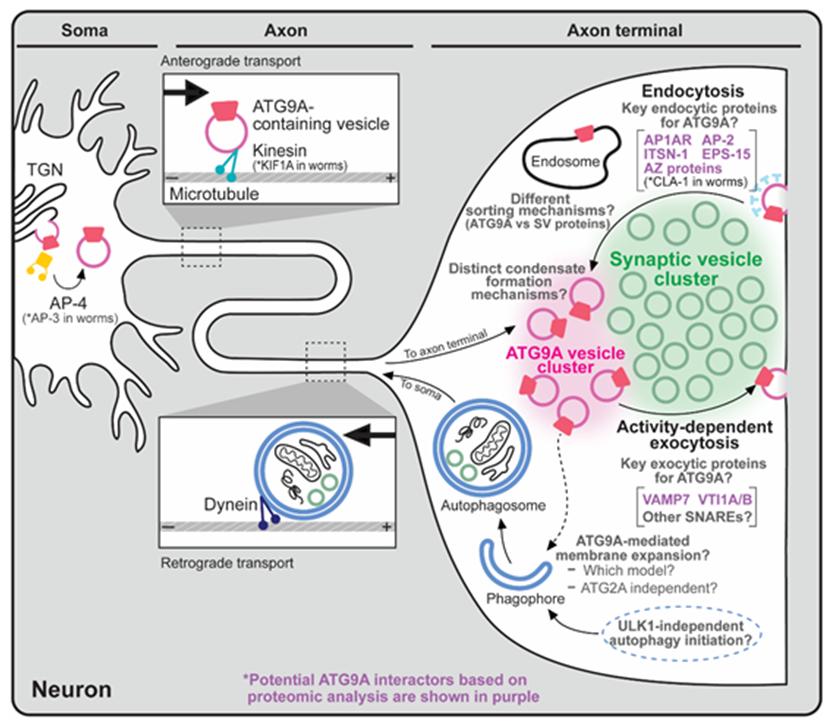Professor Park Dae-hoon's Team Published an International Academic Journal
- Writer :대외협력팀
- Date :2024.08.28
- Views :35
Professor Park Dae-hoon's Team Published an International Academic Journal, "Review on ATG9 for Autophagy Action Core Protein."
- A Joint research team led by Professor Park Dae-hoon of the Department of Medical and Biological Science of The Catholic University of Korea(CUK) - Professor Zhao Xuan of Maine University in the United States
- Published in the prestigious international journal Autophagy (IF=14.6) in the field of cell biology
 * Photo description: (From left) Choi Ji-young (The first author, Department of Medical Life Sciences of CUK), Jang Ha-eun (co-author, Department of Medical Life Sciences of CUK), Professor Zhao Xuan (co-author, University of Maine), Professor Park Dae-hoon (Communication author, Department of Medical Life Sciences of CUK)
* Photo description: (From left) Choi Ji-young (The first author, Department of Medical Life Sciences of CUK), Jang Ha-eun (co-author, Department of Medical Life Sciences of CUK), Professor Zhao Xuan (co-author, University of Maine), Professor Park Dae-hoon (Communication author, Department of Medical Life Sciences of CUK)
A research team led by Professor Park Dae-hoon of the Medical Life Sciences Department at The Catholic University of Korea (President Won Jong-chul) published a review paper on the function of ATG9 in neurons and non-neuron cells in collaboration with a research team led by Professor Zhao Xuan of the University of Maine.
Autophagy is a mechanism by which cells remove unnecessary or damaged cell components by themselves, and through this process, cells can maintain homeostasis and respond to external stress, which is known to be highly related to various diseases such as aging, degenerative neurological disease, and immune disease.
ATG9 protein is the only transmembrane protein among more than 40 autophagy-associated proteins (ATG proteins) and is an essential protein for maintaining life activity. The majority of mice lacking ATG9 protein died in the fetal period, and when ATG9 protein expressed in the brain was removed, nerve cell death and motor disorders similar to Parkinson's disease were found. In addition, recently, research results have been reported that ATG9 protein plays a key role in cell membrane recovery, cell growth and migration, and immune action against various viruses.
Although the importance of the ATG9 protein has been highlighted, it has not been clear how the ATG9 protein performs various intracellular functions in the body. In addition, although research on the ATG9 protein has been actively conducted recently, various and conflicting research results have been published, raising the need to summarize the research trends and trends so far.
In response, Professor Park Dae-hoon of the Department of Medical Life Sciences at The Catholic University of Korea and Professor Zhao Xuan of the University of Maine in the U.S. will write this review paper based on their research experiences on ATG9 proteins in nerve cell synapses, which were published in Neuron (IF:14.7) in 2022, Nature Communications (IF:14.7) and PLOS Biology (IF:7.8) in 2023. The study, which was conducted with the support of the BK21 Four project, was attended by Choi Ji-young (first author) and Jang Ha-eun (second author) of the Department of Medical Life Sciences at The Catholic University of Korea.
Through a review paper, the research team summarized the structure and function of ATG9 protein, its expected operating mechanism and model. In particular, the research team presented the lipid membrane expansion function of ATG9 protein in autophagy by combining the recently revealed lipid scramble role with the prediction of protein structure using the AI platform "AlphaFold."
In addition, this review paper systematically summarized the location and function of ATG9 protein in nerve cells based on the results of various protein body analysis revealed so far. It was intended to help understand the role ATG9 protein is expected to play in cells by linking the characteristics found due to the loss of function of ATG9 protein to various animal models.
"Until now, ATG9 proteins have not been clearly known about the mechanism of intracellular operation, compared to their importance in playing an essential role in maintaining life activity," said Park Dae-hoon, a professor of medical science at The Catholic University of Korea. "We hope that this review paper, which systematized the results of research related to ATG9 proteins, will help develop related research, such as revealing their relationship with various disease models."
※ Additional Photo

*Photo Description: Position and function of ATG9 protein in neuronal synapses

